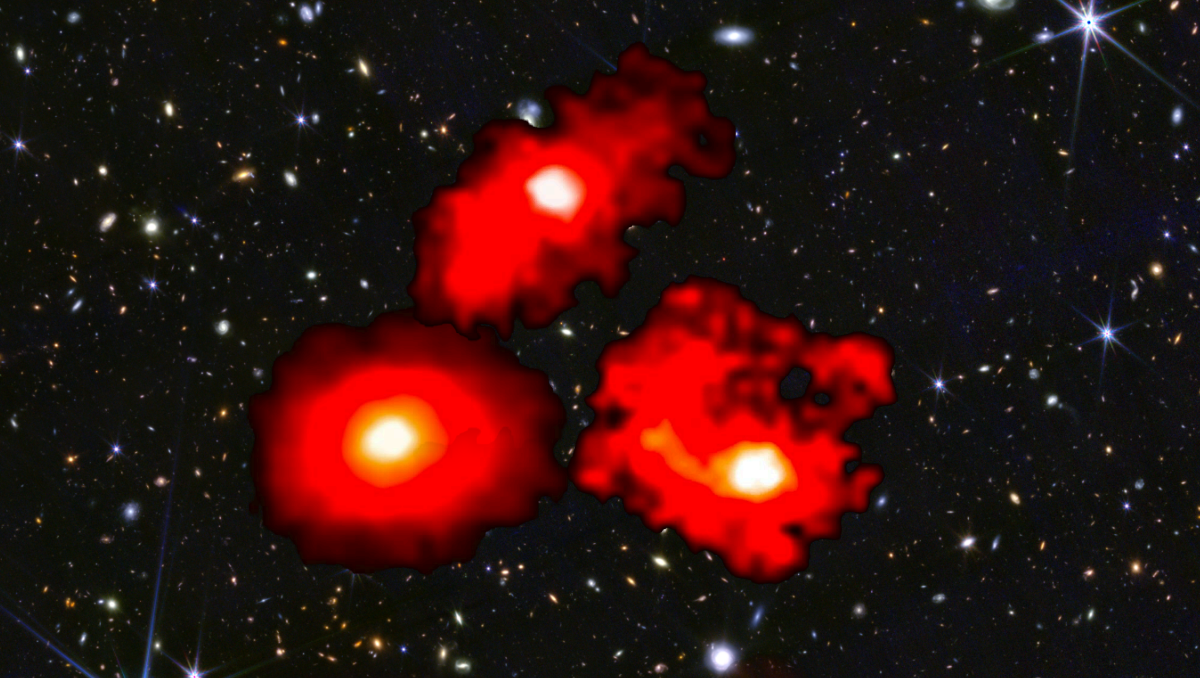Media release
From:
An international team has identified three ultra-massive galaxies – nearly as massive as the Milky Way – already in place within the first billion years after the Big Bang.
Published in Nature today, the results indicate that stars in the early Universe grew much more rapidly than previously thought, challenging existing galaxy formation models.
This surprising discovery was made by the James Webb Space Telescope's (JWST) FRESCO program, which uses the NIRCam/grism spectrograph to measure accurate distances and stellar masses of galaxies.
Associate Professor Ivo Labbé is from Swinburne University of Technology, the leading Australian institution involved in the groundbreaking study.
"The question of ‘impossibly' massive galaxies shortly after the Big Bang has vexed astronomers ever since the first images of the James Webb Space Telescope,” he says. “This is akin to finding a toddler weighing 100kg. JWST has now proven monsters do roam the early Universe".
In the hierarchical model of galaxy formation, galaxies form gradually within large halos of dark matter. Dark matter halos capture gas (atoms and molecules) into gravitationally bound structures where stars are formed. Typically, only 20 per cent of this gas is converted into stars in galaxies.
These findings challenge that view, revealing that massive galaxies in the early Universe may have been much more efficient in building stars than their later counterparts, growing much more rapidly than previously thought.
Most sources found in the FRESCO survey fit existing models, but scientists also found three surprisingly massive galaxies, with stellar masses comparable to today’s Milky Way. They have been named ‘Red Monsters’, due to their high dust content, which gives them a distinct red appearance in JWST images.
These are forming stars nearly twice as efficiently as their lower-mass counterparts and galaxies at later times.
Associate Professor Labbé says these findings raise new questions for galaxy formation theories, specifically the issue of ‘too many, too massive’ galaxies in the early Universe.
“Current models fail to explain how it is possible star formation is so super-efficient, very early in the universe”.
“The usual assumption is that exploding stars and supermassive black holes kill star formation, blowing out the candle. No doubt future Webb observations will provide us clues as to what we are missing.”
JWST's unparalleled capabilities have allowed astronomers to systematically study galaxies in the very distant and early Universe, providing insights into massive and dust-obscured galaxies.
ENDS
Professor Ivo Labbé is available for interview.



 Australia; NSW
Australia; NSW


